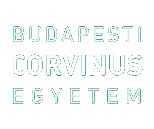Harangozó, Tamás (2019) A humán tőke beépítése a stratégiai teljesítménymenedzsment-rendszerbe: a leadership szerepe egy vezető magyarországi pénzügyi szolgáltató esetében = Integrating human capital into strategic performance management system: the role of leadership at a leading Hungarian financial service provider. Doktori (PhD) értekezés, Budapesti Corvinus Egyetem, Gazdálkodástani Doktori Iskola. DOI 10.14267/phd.2019009
Teljes szöveg
|
PDF :
2MB | |
|
PDF : (dissertation in English)
2MB | |
|
PDF : (az értekezés tézisei magyar nyelven)
1MB | |
|
PDF : (draft in English)
1MB |
Kivonat, rövid leírás
The role of intangible strategic resources – or with other words: intellectual or knowledge capital – has been one of the most intensively discussed topics of organizational and management studies in the last 25 years both from theoretical and practical aspects. Various scholars with different background – from strategy management, to performance management, HR and knowledge management, until (management) accounting studies and others – have discussed the role of intangibles in value creation, strategy and corporate performance, and the significant management challenges around them. In addition, more than 40 different performance measurement and management frameworks and methods have been developed and published by organizations from various sectors: not only from the so-called knowledge industries – such as education, financial services, IT services or management consulting – but also from traditional sectors like manufacturing, construction and others. Nevertheless, the number of those companies which have been able to successfully implement and use the abovementioned performance management tools and methods is much less than it was expected originally. If applying Gartner’s lifecycle model (Gartner [2016]), the most recent period could be easily called as ‘Through disillusionment’ because of the challenges and barriers arisen. Several challenges are related to the immaterial character of intangible strategic resources, however, important organizational factors – including leadership support and commitment – are also crucial according to both strategic performance management (SPM) and intellectual capital management (ICM), and organizational behavior studies as well. The role and impact of leadership is one of the key factors is in both the SPM, ICM and OB literature. So, it is in the focal point of my thesis when analyzing human capital and its integration level into strategic performance management system in an organization where human capital plays a crucial role in both strategy and performance. Human capital is one of the key components of intangible strategic resources with crucial impact on value and performance in various organizations. This explorative case study research has been conducted for almost 10 years and applied mixed research methodologies to understand my main question in the best possible way: why, how and what kind of human capital information is integrated into the corporate strategic performance management system, and what is the role of the senior management’s leadership style and characters at a firm where human capital is critical. By this, I aim to contribute to both the scientific and practical discourse around intellectual capital management, and the related organizational challenges. During this thesis, my original SPM perspective has been consciously and functionally combined with a change management and leadership, as well as organizational behavioral aspects, as these are all relevant for the successful implementation of an SPM system, and its beneficial use for human capital management purposes in an organization. Based on the empirical results of this case study research, even senior manager’s leadership characteristics or the main function of SPM itself can at least partially influence the level of human capital’s integration into corporate SPM, the bigger impact at the organization are related to several supporting, substituting and neutralizing organizational factors. The maturity of HRM and Strategic functions, and the level of low data availability regarding human capital performance measures all have a significant influence on the way human capital’s performance is measured and managed at the firm. This might be one of the reasons why most of the abovementioned ICM methods and tools have been not implemented successfully in organizations. Of course, to derive such a generalizable result was and could not be the objective of my thesis, but to deeply understand the phenomenon in an organization where it appeared to be relevant from various aspects. Since the results of this thesis are strongly related to studies of various SPM scholars – e.g. Simons, or Anthony and Govindarajan (etc.) – the integration of SPM, ICM and organizational behavior (here: leadership) perspectives can lead closer the scientific community to understand the theoretical and practical challenges regarding measuring and managing intangibles, and help us to step forward from the current state of ‘Through disillusionment’ to ‘Slope of enlightenment’ in the near future. Besides deeply understanding the case study organization, this latter and to provide insightful inputs for various following combined research projects have been also important goals and aimed contribution of this thesis.
| Tétel típusa: | Disszertáció (Doktori (PhD) értekezés) |
|---|---|
| Témavezető: | Lázár László |
| Tárgy: | Emberi erőforrás menedzsment |
| Azonosító kód: | 1041 |
| Védés dátuma: | 5 március 2019 |
| DOI: | 10.14267/phd.2019009 |
| Elhelyezés dátuma: | 20 Feb 2019 11:59 |
| Last Modified: | 11 Jul 2019 14:08 |
Csak a repozitórium munkatársainak: tétel módosító lap

 Letöltési statisztika
Letöltési statisztika Letöltési statisztika
Letöltési statisztika